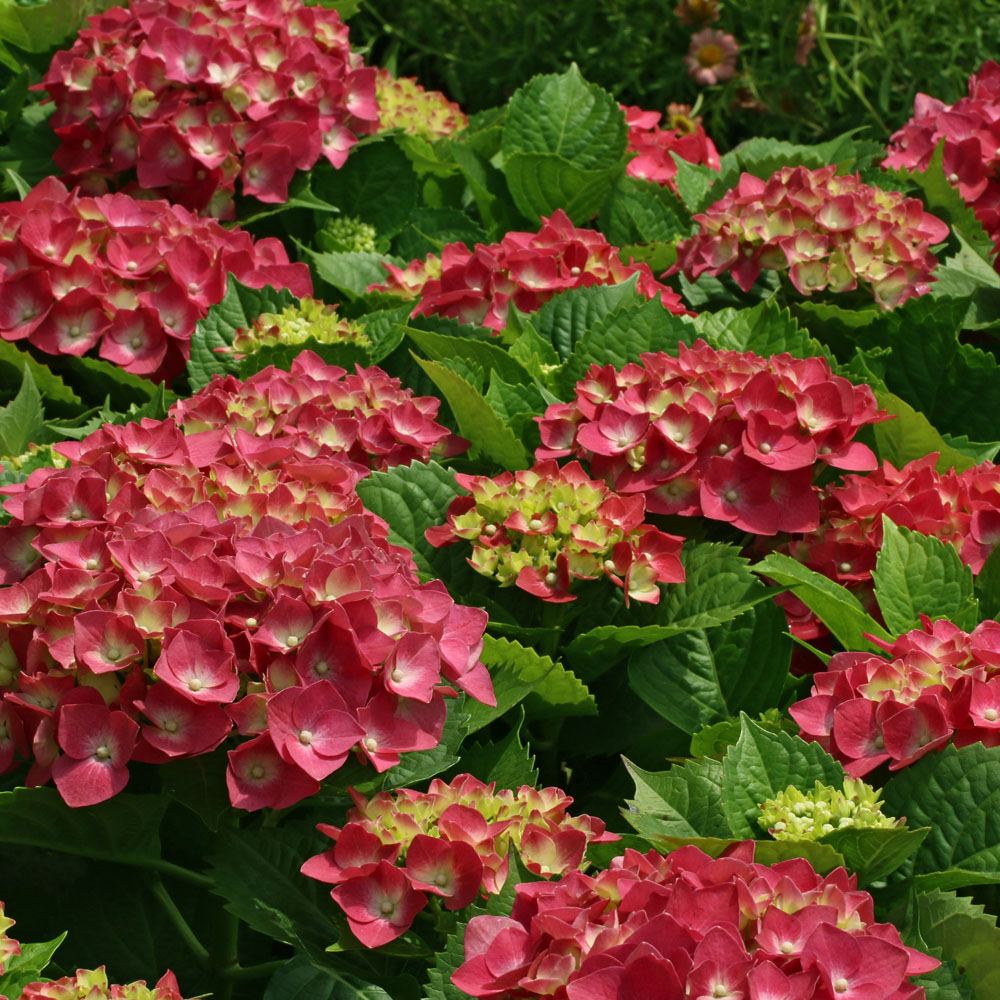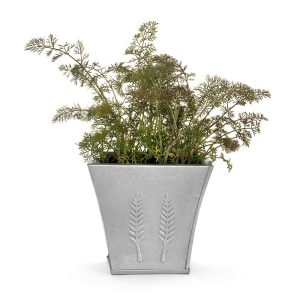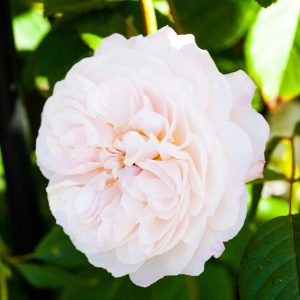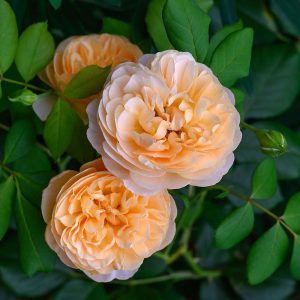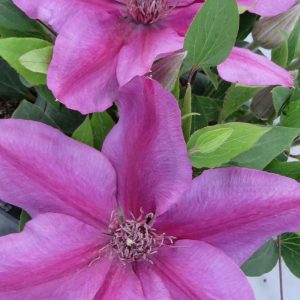Description
Hydrangea ‘Teller Red’ is a show-stopping deciduous shrub that will bring a burst of color to your garden. The green serrated leaves provide a beautiful backdrop to the vibrant lacecap-type flowers, featuring vivid red-pink outer florets and tiny pink to blue fertile florets on the inside. This spreading, upright shrub blooms from early summer through early autumn and is sure to make a statement in any landscape. Hydrangea ‘Teller Red’ pairs well with other shrubs like Azaleas, Rhododendrons, and Camellias that prefer similar acidic soil conditions. It also complements perennials such as Astilbes, Hostas, and Ferns, which provide a lush backdrop for the striking blooms. Plant it in partial shade to protect the flowers from harsh sun exposure, and ensure it receives ample water during the growing season to keep it looking its best. With its bold colors and unique flowers, Hydrangea ‘Teller Red’ is a standout choice for any garden.
Key Facts
- Common Name(s):Hydrangea ‘Teller Red’
- Hardiness:Fully hardy
- How big will I get? Hydrangea macrophylla ‘Teller Red’ can grow to a height of 1.2m and a spread of 1.2m.
- Did You Know That:Hydrangeas contain low levels of cyanide?
Plant Calendar
A rough guide to how this plant will change through the year.
| Jan | Feb | Mar | Apr | May | June | July | Aug | Sept | Oct | Nov | Dec | |
| Flowering Time |  |
 |
 |
|||||||||
| Foliage Colour |  |
 |
 |
 |
 |
 |
 |
 |
 |
| J | F | M | A | M | J | J | A | S | O | N | D |
 |
 |
 |
|||||||||
 |
 |
 |
 |
 |
 |
 |
 |
 |
Care Guide

Soil Requirements
Hydrangea macrophylla ‘Teller Red’ prefers moist but well-draining soil. This plant can grow in soil with a wide range of pH levels, it is not picky about the pH level of the soil.

Best Position
Hydrangea macrophylla ‘Teller Red’ prefers a sheltered position and likes the sun but not too much of it, so an area that is partially shaded is perfect.

Maintenance
Hydrangea macrophylla ‘Teller Red’ flower on the previous years growth, therefore each year in late Winter or early Spring cut out a small number of the old stems at the base and remove old flower heads back to the nearest sideshoots. This will encourage some new growth which will in the future produce more flowers, but it won’t affect thats season’s flowers. Although most shrubs that flower on old wood should be pruned immediately after flowering, Hydrangea macrophylla are an exception to this rule. This is because the cut stems are vulnerable to frosts, whereas the old flowers protect them from the frost, therefore they should be trimmed back later.

Pest, Diseases and Wildlife
Hydrangea macrophylla ‘Teller Red’ can have problems with aphids and scale insects, it can be vulnerable to certain diseases such as powdery mildews, leaf spot, grey moulds and honey fungus. It is toxic to cats, dogs and horses.
